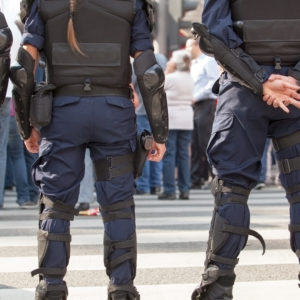With just a few weeks before the presidential election, a top issue for voters is terrorism. In the last year, Europe and America (the West) experienced attack after attack, both large and small. The year started with the devastating small cell attack in Paris followed by the husband-wife attack in San Bernardino and ended (so far) with the multi-site attack in New York and New Jersey and lone-wolf gunman in Washington. The frequency and variety of attacks across the West is like nothing we’ve seen since the September 11, 2001, attack.
The terrorist threat is higher than ever. It is only going to get worse.
Two trends occurring in the Middle East foreshadow a worsening threat environment in the West. First, with the collapse of ISIS’s dominance in Syria and Iraq, the foreign fighters who made their way to the Middle East are coming back. Security entities in the West are doing all they can to prevent their return, but, given the numerous land and water entry points around the Mediterranean Sea and continued migrant flows within which they can hide, they simply can’t stop every returning fighter.
Equally troubling is the presence in the West of frustrated fighters who wanted to travel to the Middle East to join ISIS, but couldn’t find a way. Estimates place the number of these radicalized individuals at more than 10,000 — roughly 10 times the number of returning fighters. Combined with the million-plus migrants (about whom we know very little) who poured into Europe over the last year, European security agencies are spread too thinly. Their ability to identify and monitor, let alone stop, all of these individuals is weak, at best.
The second trend is the re-emergence of al-Qaeda (not that it ever went away), especially in Syria where an al-Qaeda affiliate has patiently established itself. In a shift toward the ISIS model, al-Qaeda has moved from focusing largely on spectacular, catastrophic attacks on the West to calling on adherents to “attack the West by whatever means.” The West’s intelligence agencies have become very good at detecting and thwarting the former types of attacks, but simply aren’t constructed and resourced for an Uberized terrorism environment.
In the United States, the Federal Bureau of Investigation, with only 35,000 personnel, is grossly outmanned. Moreover, a centralized entity is ill-equipped to fight a decentralized enemy. The only way to increase our capabilities and odds of winning is to evolve our national security apparatus by decentralizing elements to local law enforcement, which has a million badged officers and decades of experience to contribute to the fight.
First, with a growing volume of terrorist recruiting, communications, planning and execution occurring behind encrypted technologies, substantially increasing the use of human intelligence (HUMINT) being done by local law enforcement is vital.
Given their years of experience infiltrating organized crime, gangs and transnational networks, local law enforcement in our higher-risk cities possess the skill and legal framework to monitor, surveil and go undercover when necessary. HUMINT will give us the access undermined by the decline in signals intelligence due to encryption.
Next, we can’t defeat terrorism without the help of Muslim communities. Most of the attacks over the last year involved suspicious precursor activities witnessed by family, friends, neighbors or acquaintances. We must build inroads into the Muslim community to increase the trust they have in law enforcement and open critical lines of communication. Doing so will facilitate cooperation, as Muslim parents realize reaching out to law enforcement could get their wayward child help, not handcuffs or worse. We need to build off-ramps before young Muslims are too far down the radicalization path.
Last, we must reform our domestic intelligence enterprise to consolidate information and intelligence activities in our states. Currently, in too many places, those activities are bifurcated into two different entities (FBI-led Joint Terrorism Task Forces and DHS-funded fusion centers) residing in physically separate locations. While sincere efforts are made to connect the two entities, it is axiomatic that separation and distinct operations increase the odds key data are not gathered and analyzed in one place. We can’t keep failing to connect the dots.
Terrorism’s dark clouds are gathering on the horizon. Our Constitution gives the federal government great powers to act to keep us safe. It also recognizes the important role local law enforcement plays in our domestic security. We need a president who will bring both pieces together to form a national security whole.

